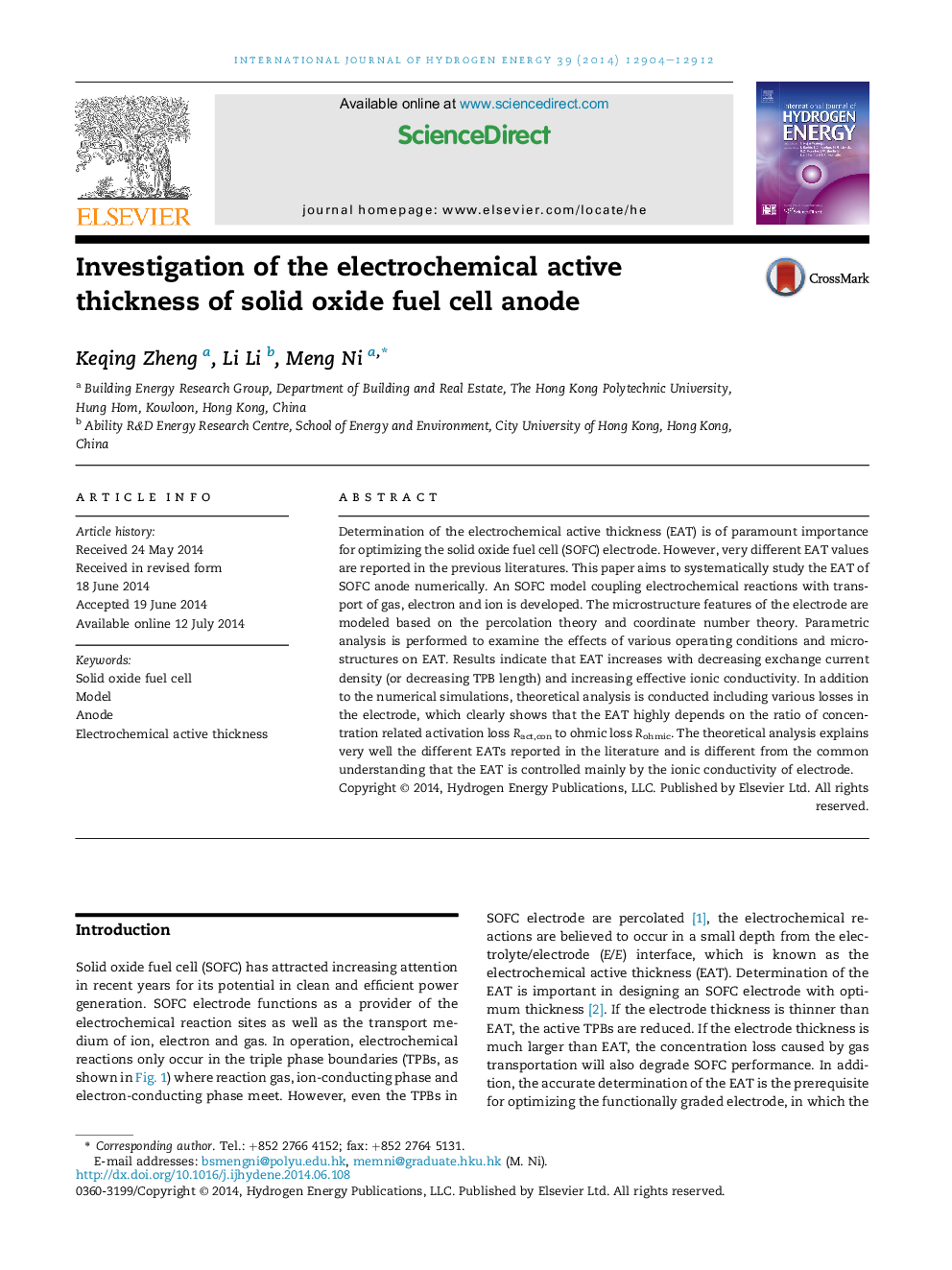| Article ID | Journal | Published Year | Pages | File Type |
|---|---|---|---|---|
| 7718752 | International Journal of Hydrogen Energy | 2014 | 9 Pages |
Abstract
Determination of the electrochemical active thickness (EAT) is of paramount importance for optimizing the solid oxide fuel cell (SOFC) electrode. However, very different EAT values are reported in the previous literatures. This paper aims to systematically study the EAT of SOFC anode numerically. An SOFC model coupling electrochemical reactions with transport of gas, electron and ion is developed. The microstructure features of the electrode are modeled based on the percolation theory and coordinate number theory. Parametric analysis is performed to examine the effects of various operating conditions and microstructures on EAT. Results indicate that EAT increases with decreasing exchange current density (or decreasing TPB length) and increasing effective ionic conductivity. In addition to the numerical simulations, theoretical analysis is conducted including various losses in the electrode, which clearly shows that the EAT highly depends on the ratio of concentration related activation loss Ract,con to ohmic loss Rohmic. The theoretical analysis explains very well the different EATs reported in the literature and is different from the common understanding that the EAT is controlled mainly by the ionic conductivity of electrode.
Keywords
Related Topics
Physical Sciences and Engineering
Chemistry
Electrochemistry
Authors
Keqing Zheng, Li Li, Meng Ni,
